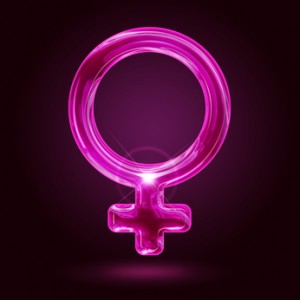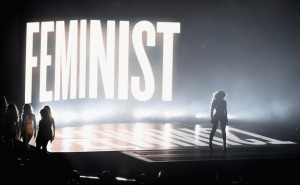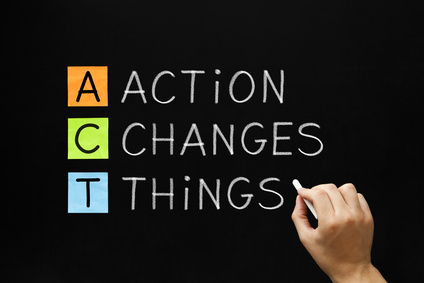 In case you missed it (and really, who didn’t?), August 26th was Women’s Equality Day. It is a day proclaimed annually by the President of the United States to commemorate the granting of the vote to women throughout the country. After 72 years of struggle, women in the U.S. were granted the right to vote on August 26, 1920, when the 19th Amendment to the United States Constitution was certified as law.
In case you missed it (and really, who didn’t?), August 26th was Women’s Equality Day. It is a day proclaimed annually by the President of the United States to commemorate the granting of the vote to women throughout the country. After 72 years of struggle, women in the U.S. were granted the right to vote on August 26, 1920, when the 19th Amendment to the United States Constitution was certified as law.
While I’m grateful that our leaders have seen fit to honor this momentous event with a special day, I am disappointed in the lack of fanfare surrounding it. Leaving aside the irritant of having Women’s Equality Day on par with Whiskey Sour Day (the day before), I expected more notice to be made of it. However, most of the media ignored it and even the most ardent capitalist didn’t appear to seize the occasion to have a Women’s Equality Sale designed to entice women to shop. Missed opportunity if you ask me.
Sure the White House issued a column on women’s issues but other than that, few people recognized this historic day. There was a Forbes article (written by a man, natch) and the Huffington Post did a good job of covering the anniversary but, other than those and some local celebrations, the day passed mostly unremarked. I’m sure many people are clueless about why we should care about such an anniversary. Why should we celebrate the granting of a right that occurred 94 years ago? Two reasons: (1) we need to know where we came from and (2) we need to know where we are so we have an idea of where we need to go.
Too many people have no appreciation of just how difficult it was for women in the United States to be granted the right to vote. Nor do they realize that it wasn’t so long ago. There are still a few people with us today who were alive when women could not vote! So, a time when women had few legal rights was not even a lifetime ago. And the fight to get rights was incredibly challenging!
Women held meetings and marches and quiet fireside chats, all designed to get Congress to pass a law allowing us to have a say in our destiny. They crisscrossed the country, giving speeches and helping organize state referendums and campaigns to get women suffrage. They weren’t having much luck though until Alice Paul came up with the brilliant idea of forcing President Woodrow Wilson’s hand by protesting in front of the White House. For over two and a half years, more than a thousand different women picketed every day and night except Sunday. The Silent Sentinels (as they were called) held up banners saying things like, “Mr. President: How Long Must Women Wait for Liberty?” and continued even after the U.S. entry into World War I and criticism of the President was considered unpatriotic.
Many of the Sentinels were arrested on charges such as “obstructing traffic” and sent to prison but they did not give up. Since the women refused to admit guilt or pay any of the fines, they were imprisoned and treated harshly. Alice Paul led them in a hunger strike and prison officials brutally forced food down their throats. The resulting negative publicity turned the tide in favor of granting women the vote and the 19th Amendment was soon ratified (by a one vote margin!). Since then, women of color like Fannie Lou Hamer (“All my life I’ve been sick and tired. Now I’m sick and tired of being sick and tired.”) also endured cruel treatment just for registering and trying to register other women to vote. In other words, the vote is serious business.
Women’s equality doesn’t stop there though. Sure, we’ve gained a lot of rights and made significant strides in some areas but we still have so far yet to go. There were two events that occurred around Women’s Equality Day that I thought were telling. The first was Beyoncé’s performance at MTV Video Music awards the night before.
Much has been made of her decision to perform her song “Flawless” in front of a giant screen  blazoned with the word “FEMINIST” while utilizing parts of author Chimamanda Ngozi Adichie’s speech on feminism and expectations for girls. While I agree that it was great, you have to put it in context. Beyoncé and her backup dancers all performed while scantily clad, thereby playing almost exclusively to the male gaze. Not so feminist. At one point, they even did some pole dancing. You can argue all you want about how empowering pole dancing is for women but the fact remains that it is a dance most associated with women dancing for the entertainment of men at strip clubs where women’s bodies are bought and sold. Not so equal.
blazoned with the word “FEMINIST” while utilizing parts of author Chimamanda Ngozi Adichie’s speech on feminism and expectations for girls. While I agree that it was great, you have to put it in context. Beyoncé and her backup dancers all performed while scantily clad, thereby playing almost exclusively to the male gaze. Not so feminist. At one point, they even did some pole dancing. You can argue all you want about how empowering pole dancing is for women but the fact remains that it is a dance most associated with women dancing for the entertainment of men at strip clubs where women’s bodies are bought and sold. Not so equal.
The second event was the firestorm kicked off by New York Senator Kirsten Gillibrand’s tales of sexism and sexual harassment in the U.S. Senate. What has been interesting to watch is the gender divide in the reactions to this. Most of the women reporters and commentators nodded along and even came up with their own tales of sexual misbehavior on the part of our nation’s leaders. However, many of the male commentators demanded that she name these men (thereby putting the onus of responsibility on Senator Gillibrand) or showed surprise or dismay. One dimwit even gave advice on how to judge women’s appearance without being offensive. In other words, this was news to men but not to women. Again, not so equal.
Which leads us back to Women’s Equality Day and the travesty of mostly ignoring it. A lot of blood, sweat and tears went into gaining the right of women to vote. We cannot forget that or we risk putting all of their hard work to shame. Similarly, women still are not equal. Sure, we have a lot more rights than our grandmothers did but that doesn’t mean we’re finished. Alice Paul knew this sad truth. She believed that the vote was just the first step in women’s quest for full equality.
In 1923, she wrote the Equal Rights Amendment (ERA), also known as the Lucretia Mott Amendment, and launched what would be for her a life-long campaign (she died in 1977) to win full equality for women. Congress passed the ERA in 1972 but remains three states short of ratification. For over 50 years, the ERA has been introduced in every session of Congress. At least in the short term, it seems like that is where we need to go.
Maybe we can use this year’s Women’s Equality Day as a way to teach awareness of both our history and our future. I certainly hope that we can do better than we did this year! If we can use next year’s Women’s Equality Day as a milestone for celebrating passage of the ERA, then I will be satisfied.

